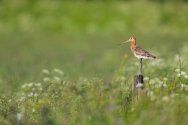Background
Six dilemmas – part 3: what moral position do animals have within our food supply?
Humans have historically always domesticated animals for their own needs, which include consumption. Recent decades have shown an increased focus on animal well-being and health, which, in turn, has led to legislation and new market concepts. Laws prohibit the docking of pig’s tails, poultry beaks, and such livestock farming systems as battery cages. The dominant opinion is that keeping and killing animals for human consumption is morally justified but that the animal’s quality of life must be ensured. What constitutes acceptable quality of life is a balancing act between desire and financial viability.
There is, however, an increasing push within the domains of philosophy and ethics that question this position, stating that animals have specific rights that should be included in our legislation. In the most extreme cases, keeping animals in captivity and killing them is prohibited entirely.
Life worth living
Against this backdrop, the debate shifts from safeguarding animal welfare to achieving a humane method of keeping animals (as per the advice of the Council for Animal Affairs), which aims not just to prevent suffering but to achieve a life worth living. In its current form, most farm animals are not yet kept in accordance with all the principles of humane livestock farming.
The Animal Law has been honed to prohibit causing an animal pain or injury for no acceptable reason or to imperil its health and well-being. In the Vestering amendment to this law, housing is excluded explicitly as an “acceptable reason”. As a result, the conditions under which animals may be kept are steeper. There is an increasing trend to critically examine how we use animals within our food system. In the most extreme scenario, this could mean ceasing the use of animals altogether.
Livestock farming from an animal’s perspective
As we increasingly view animals as equal to humans, using them becomes more disputable. The question arises as to whether animals may even be used to process residue streams and grass within our food system. Animal husbandry systems are considered from the animals’ perspective, meaning the system must contribute to a positive emotional state in the animal.
Here, we note that on a global scale, and even within Europe, there are significant differences in opinions on the position of animals and the importance of animal welfare. The Netherlands and other North-Western European countries work on market concepts that include standards that go further than those set in laws, while the focus elsewhere is on using animals as efficiently as possible to keep prices down.
6 dilemmas
The societal debate on agriculture and nature frequently focuses on slashing the livestock population in half and whether we should aim to achieve the nitrogen targets in 2030 or in 2035. But are there the right questions? A group of Wageningen researchers identified six dilemmas contributing to the Netherlands’ future course of agriculture and nature.
In the series “6 Dilemmas”, each of the dilemmas is discussed in more detail.


